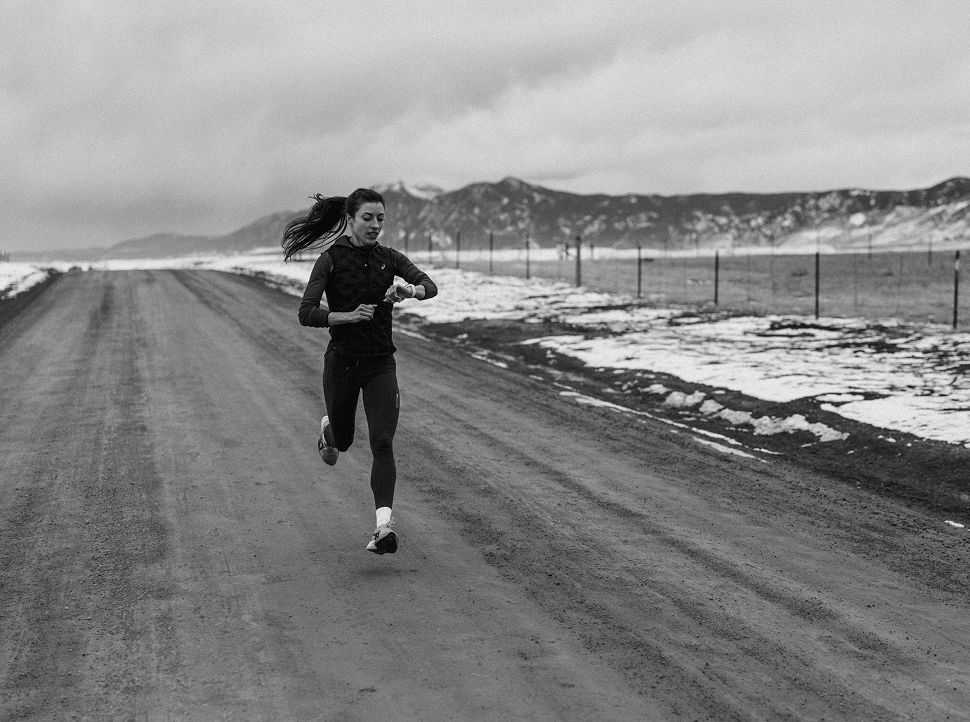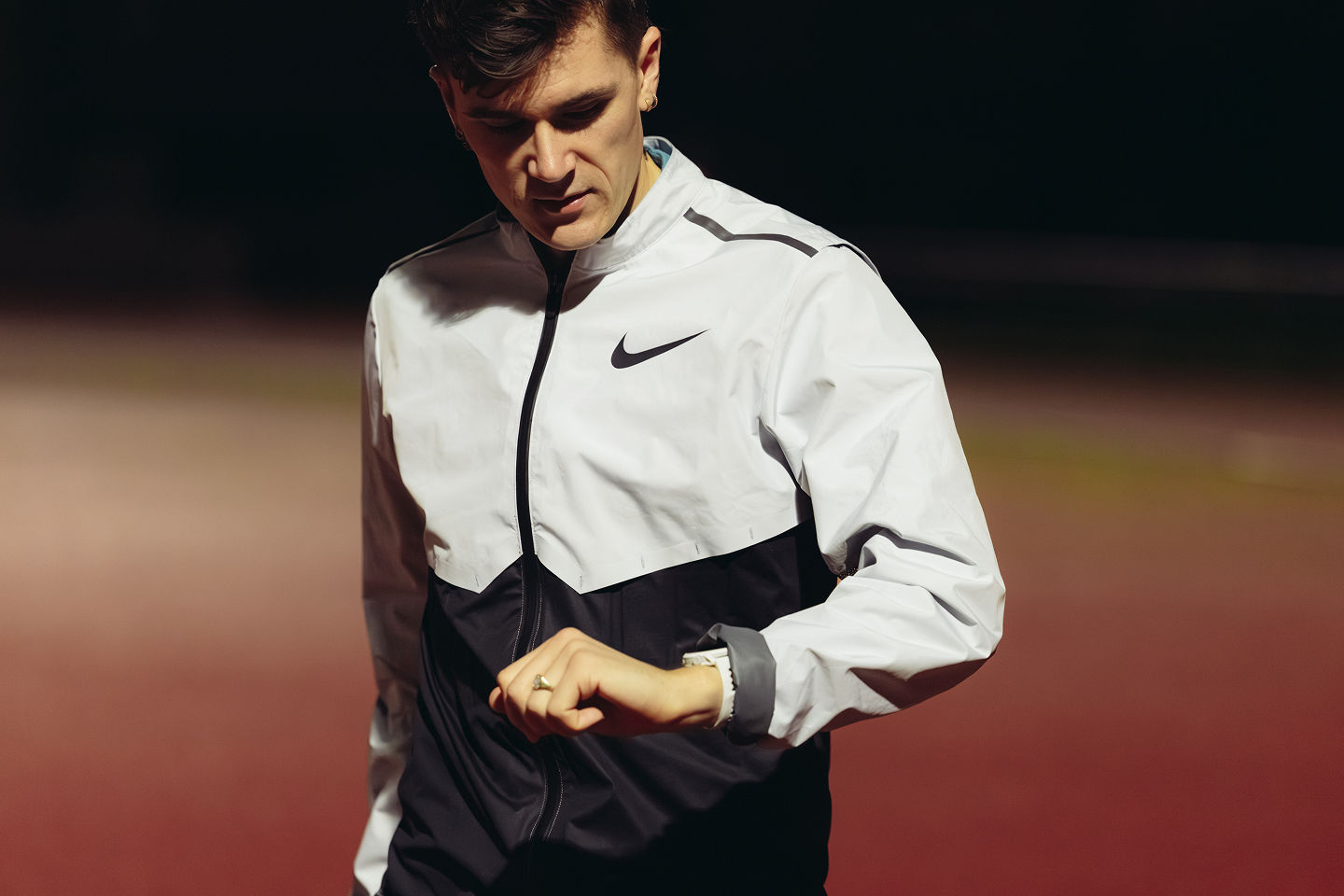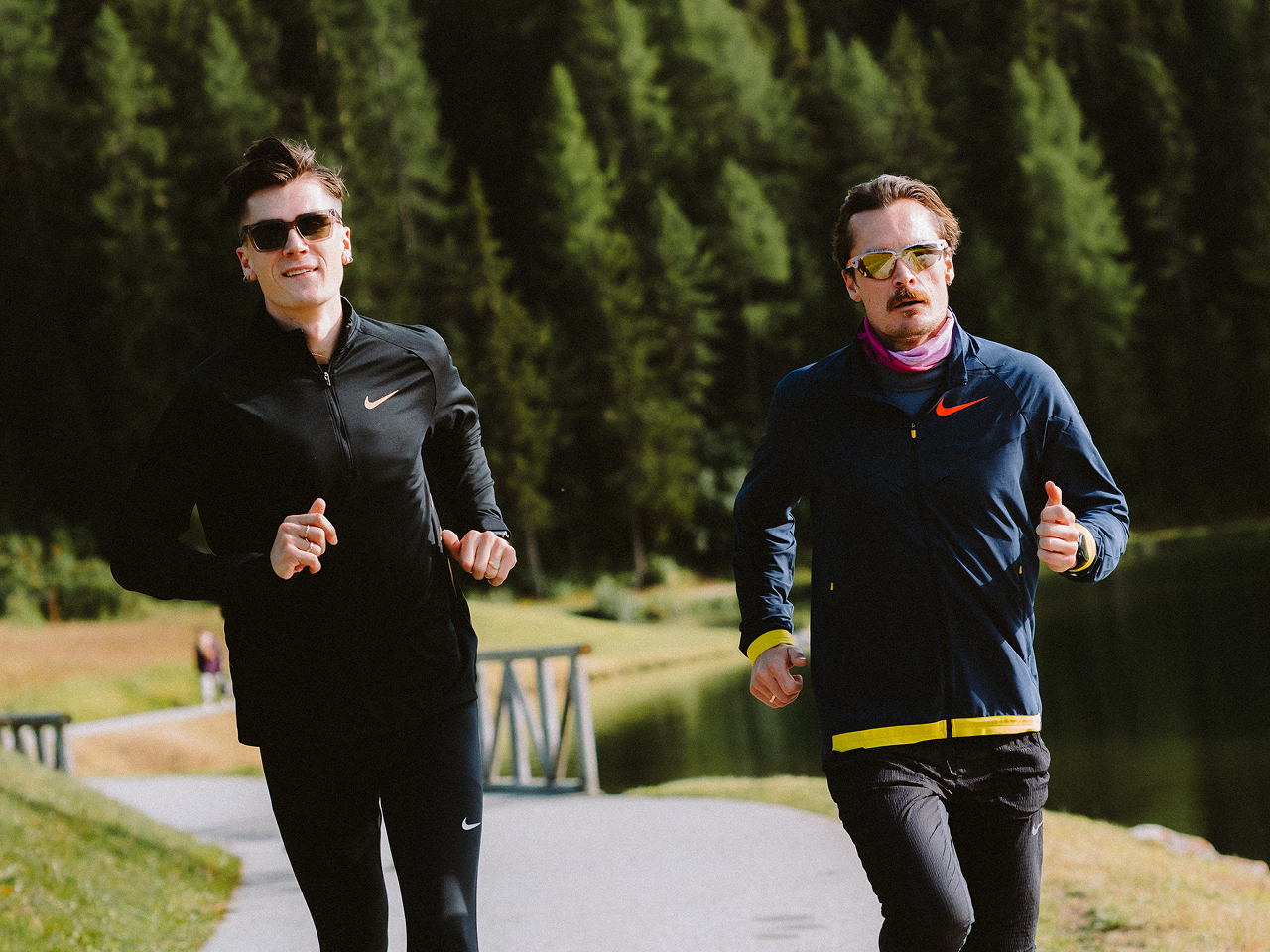The 5000m race has brought countless runners together over the past several decades. Whether it be a charity event with dogs and strollers or a prestigious competition under stadium lights, it’s a distance that runners of all experience levels work to perfect. No matter how fast or how far you can run, your body possesses a limited amount of effort that it can give to the unique distance of 5000m. This effort is determined by processes called bioenergetics—how the body’s cells produce and use energy.
Bioenergetics happens both at rest and during physical activity, but we are focusing on this concept in running. When we run, the body uses three main energy systems to produce the motion and intensity required for the work. These systems are:
- Phosphocreatine (PCr) System: This system provides immediate energy for short, powerful efforts lasting up to ~10–15 seconds. It is anaerobic, meaning it does not require oxygen, but it depletes quickly and takes time to regenerate during periods of rest or reduced exertion.
- Glycolytic System: This system breaks down glucose to produce energy. Anaerobic glycolysis provides energy rapidly for efforts lasting ~2 minutes, but it also leads to the production of hydrogen ions, which contribute to quick fatigue. Aerobic glycolysis produces energy more slowly but can sustain moderate efforts over longer periods.
- Oxidative System: The oxidative system uses oxygen to produce energy from carbohydrates and fats. Although it is slower to activate compared to the PCr and glycolytic systems, it supports sustained energy output for longer durations, making it essential for endurance events like the 5000m.
The different types of skeletal muscle also play a role in bioenergetics. We will focus on the two main types—fast-twitch and slow-twitch fibers:
- Fast-Twitch Fibers: These fibers produce more force and power but fatigue more quickly. They are primarily recruited during high-intensity efforts and rely heavily on the anaerobic glycolytic system.
- Slow-Twitch Fibers: These fibers are more resistant to fatigue, produce less force compared to fast-twitch fibers, and produce more sustainable aerobic energy from the oxidative system. Their ability to shuttle and reuse metabolic byproducts, like lactate, helps delay the onset of fatigue during endurance events.
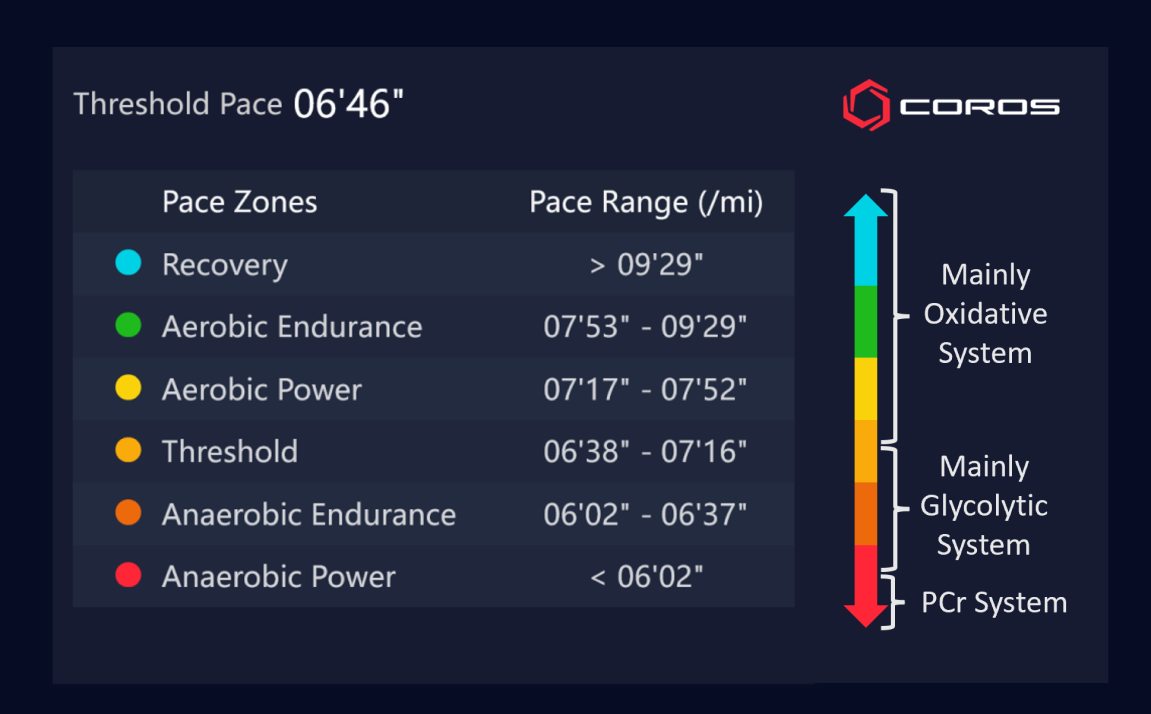
How the energy systems relate to your personalized pace zones
Coaches Tip: COROS provides personalized pace zones for each athlete based on their recent training. The estimates get more accurate as you train, but you can also perform a Running Fitness Test to calibrate them quickly. This test requires a hard effort, though, so COROS recommends doing it on fresh legs and far away from any races you have planned.
So, what do we do with this information? Understanding how the body uses energy and manages fatigue can help you learn to execute a 5000m race to the best of your ability. Let’s break the race down into phases to discuss the effort in detail:
The Opening 1000m
If you have ever watched middle school cross country or participated in a community road race, you’re likely aware of how most people take off sprinting at the start. Many runners make critical pacing errors in the first 1000 meters of a 5000m race.
It may seem straightforward to avoid starting too fast or too slow, but excitement, nerves, and adrenaline can make it tricky to pace properly. Understanding why pacing matters and how to recognize key signals from your body can help prevent costly mistakes.
What Happens if You Go Out Too Fast
If you start with an extremely hard effort from the sound of the gun, the body immediately taps into the phosphocreatine (PCr) system, which provides rapid energy for the first 10–15 seconds of running. But PCr stores are limited and deplete quickly. Once depleted, they cannot replenish without significant rest or slowing down.
Starting too fast also means you use a higher proportion of fast-twitch muscle fibers. While these fibers produce quick, powerful energy, they have limited endurance. Using them generates byproducts like lactate and hydrogen ions, which contribute to fatigue.
When hydrogen ions build up in the muscles, they cannot contract effectively, which forces you to slow down. This means you’ll be running slower than your ideal pace, which could have been avoided by starting at a more controlled effort.
What Happens if You Go Out Too Slow
On the flip side, starting too slow has its own consequences. While you won’t risk early fatigue or be forced to slow down, you aren’t maximizing your performance either. By starting too conservatively, you’re leaving valuable time on the course that you won’t be able to make up later. The early portion of the race is crucial for setting a sustainable, but challenging, pace that balances energy efficiency and effort.
The COROS virtual pacer feature allows your watch to show how far ahead or behind pace you are, without excessive alerts. Runners have the option to select a distance, or skip this step entirely and choose just a target pace.
The Ideal Opening 1000m
The goal in the first 1000m is to accelerate smoothly to race pace without over-relying on your PCr stores. (A small expenditure of PCr is necessary when you accelerate as you first take off, but if you pace correctly, you’ll avoid depleting it.) After a few hundred meters, you want to settle into a controlled pace where you’re pushing hard, but not too hard.
As mentioned earlier, hard efforts produce a byproduct called lactate. This is not inherently bad for performance, because the body uses it as a fuel source. Ideally, you want to be running hard enough to produce lactate, but not so hard that it accumulates faster than your body can use it. In other words, the body should be in a balance between lactate production and clearance. This prevents excessive production of hydrogen ions in the muscle cells, which lead to fatigue.
In a practical sense, this effort will lead to heavy breathing—a sign that your oxidative and glycolytic systems are working hard. However, out of control breathing is a red flag that you’ve crossed the line. When the body is pushed into higher intensity, breathing rate increases to rid more carbon dioxide (CO₂), which helps the body chemically counteract the excess hydrogen ions in the muscle cells.
Pay close attention to how you breathe. Heavy but controlled breathing indicates you're working at an optimal pace; erratic or labored breathing suggests you're overreaching and need to back off.
A 5K should be in the Threshold or Anaerobic Endurance pace zone, depending on your ability. Checking your personalized pace zones can give you a good starting point to pace from.
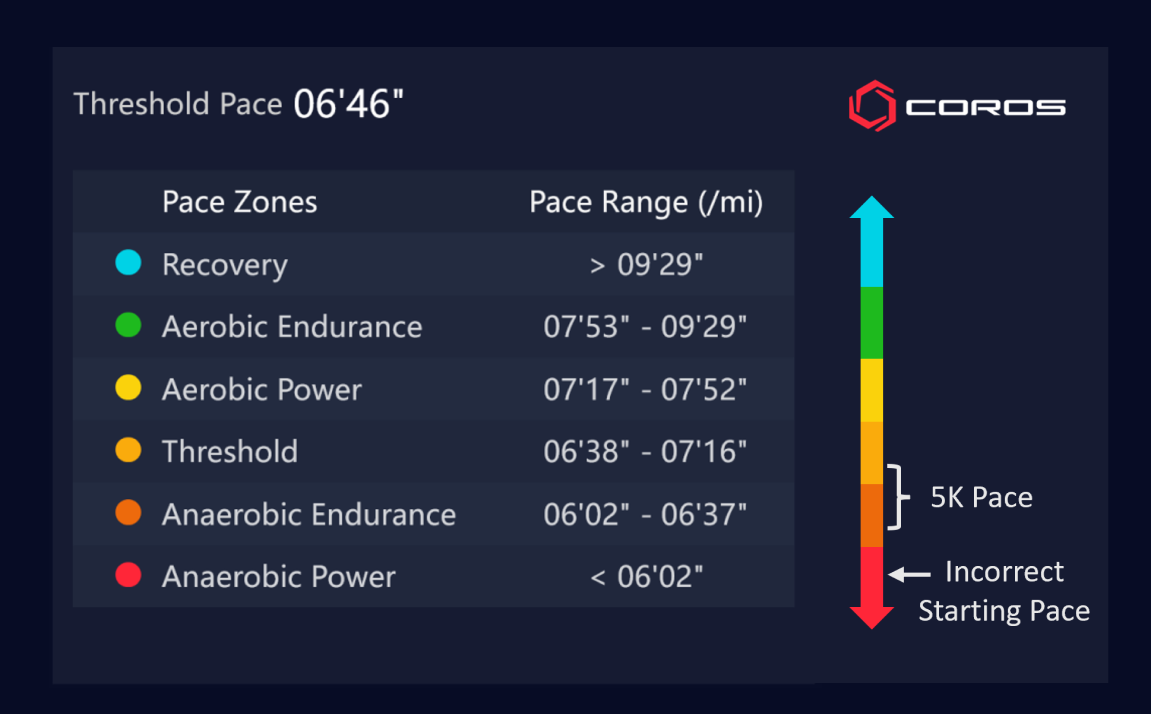
Many runners mistakenly start their 5K in the Anaerobic Power zone
The Middle 3000m
Similarly to the first 1000m, the goal in the middle 3000m is to maintain that delicate balance between lactate production and clearance. If you find this balance, your effort will feel very hard but sustainable for the distance.
However, this balance becomes much harder to achieve if you go out too fast in the opening 1000m, because your body will already be dealing with the metabolic consequences of that effort. In that case, you'll need to slow down to let your body neutralize the hydrogen ions in the fatigued muscles. You will be able to push harder again once this balance has been restored, but that will be difficult to achieve if you continue to try to run as hard as you can.
Pacing and effort can be affected by external factors like hills. To account for this, COROS uses effort-pace, a personalized metric that adjusts for your effort on inclines and declines.
The Closing 1000m
The final 1000m is where the race becomes most exciting and challenging. The ideal effort leading up to this point has been centered on setting yourself up for a strong finish. If you've paced the race well, this is where you can capitalize on your ability to finish strong. Whether you're competing for the podium or running against the clock, the goal is to arrive here with energy in reserve, ready to push your limits.
Tactical Considerations
If you’re in a competitive mindset, the objective is to be in contact with your opponents while conserving as much energy as possible. This sets you up to respond to any surges from competitors and to plan your own move for the win. If you’ve paced correctly, you should still have some PCr stores available for a final burst of speed. Timing your attack strategically—whether it's on an uphill stretch, a turn, or in the final straight—will give you the best chance of sustaining that effort to the finish.
For those running a time trial or solely aiming for a personal best, the strategy remains similar, but without the need to react to competitors. Your focus is on creating the perfect moment to increase your intensity and finish strong. The key is to lean into the discomfort, knowing that the finish line is near, and that you can afford to push harder.
Coaches Tip: The Race Predictor feature is a great tool for setting expectations for your race. Knowing your own ability can be a difference-maker in competitive racing.

The Race Predictor as seen in the COROS mobile app
Bringing on the Kick
This last 1000m is all about embracing the pain and taking calculated risks. It is the time to allow yourself to increase intensity and allow lactate and hydrogen ions to accumulate faster than your body can clear them.
Unlike the earlier portions of the race, where managing effort was key to sustaining the work, you can let loose in the final 1000m. An intense pace surge will cause your muscles to produce more lactate and hydrogen ions, but with the finish line in sight, you can afford this short-term discomfort.
Whether you're racing others or against the clock, it's acceptable—and expected—to feel like your muscles are completely depleted by the end of the race. Your body will quickly recover after crossing the line, and the reward will be knowing you left everything on the course, track, trail, or road.

/filters:quality(90)/fit-in/970x750/coros-web-faq/upload/images/f33750817c2a5ae8341f69c8bbd469c6.png)



